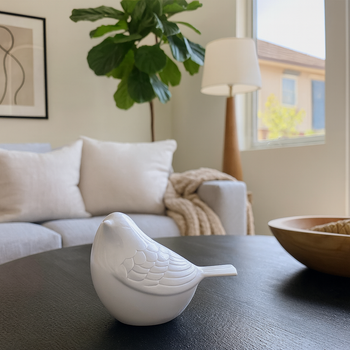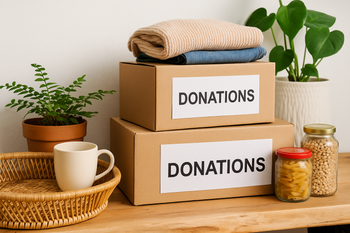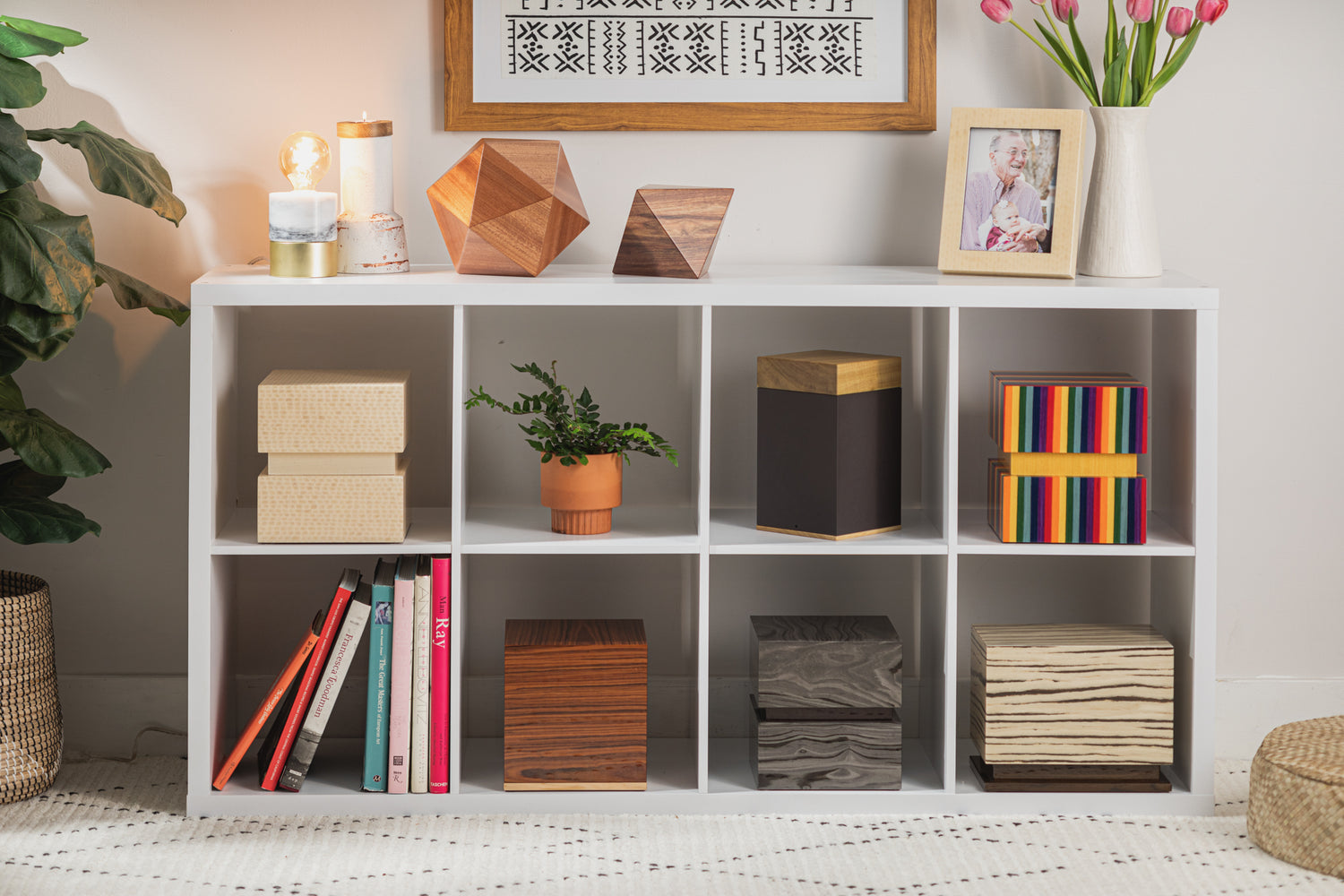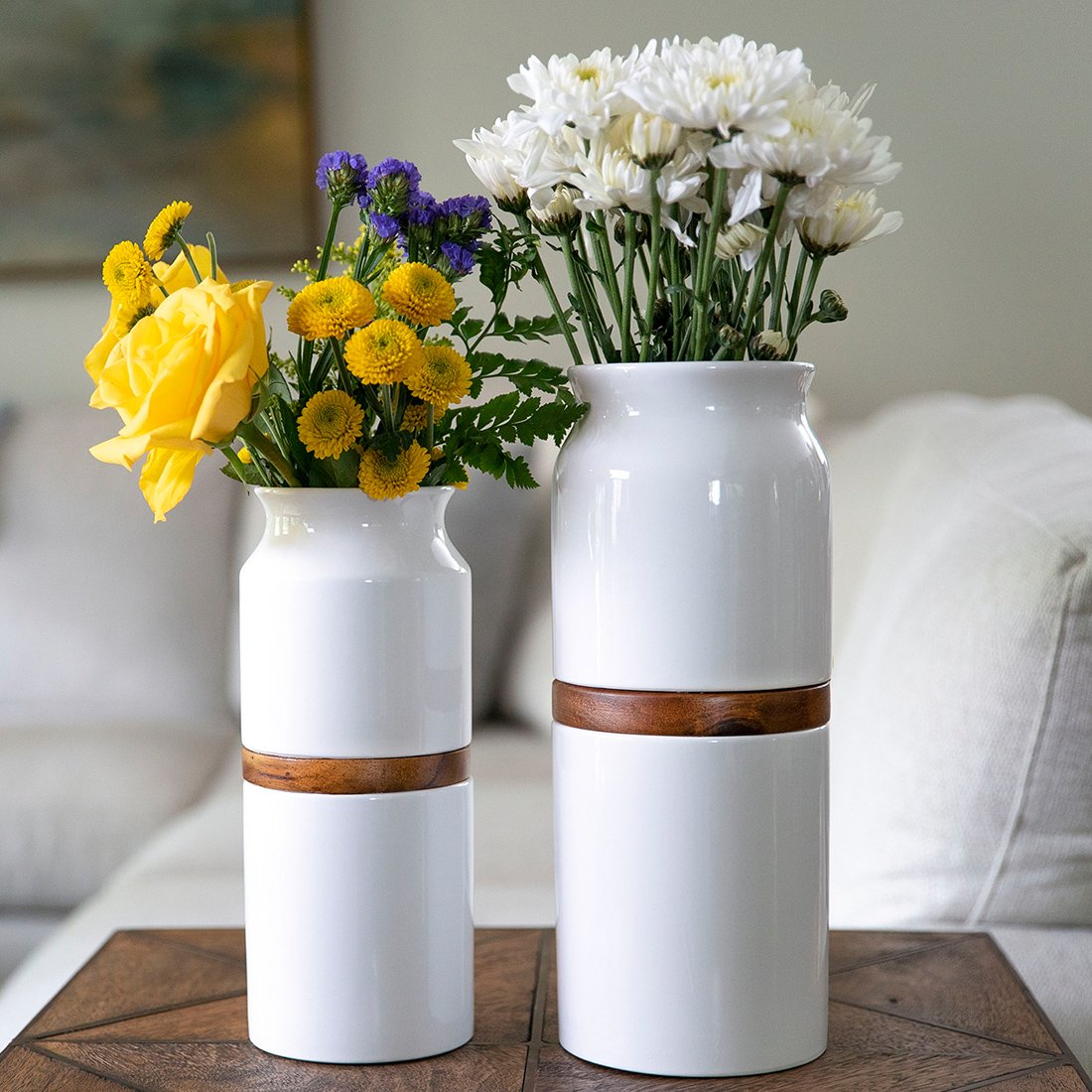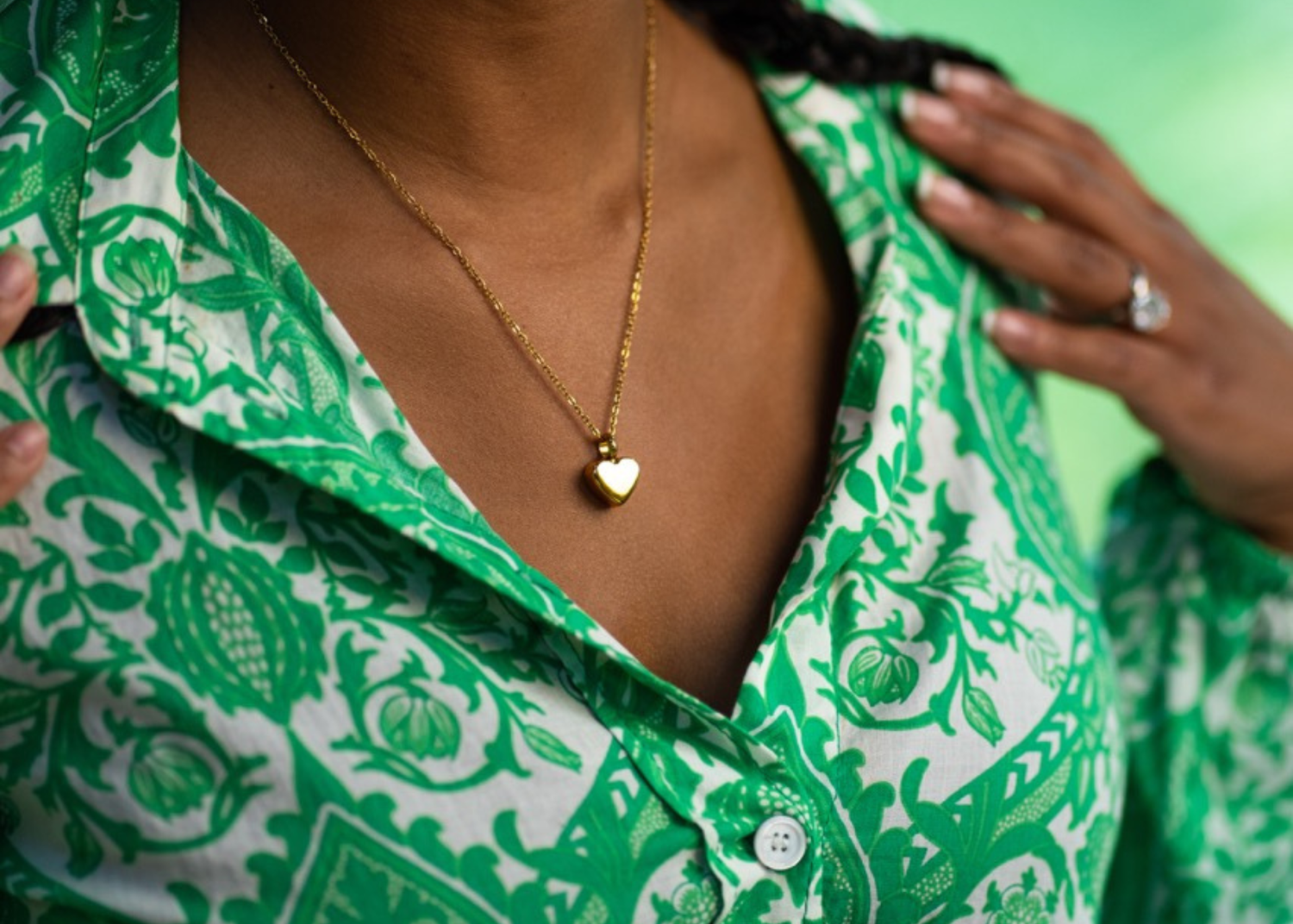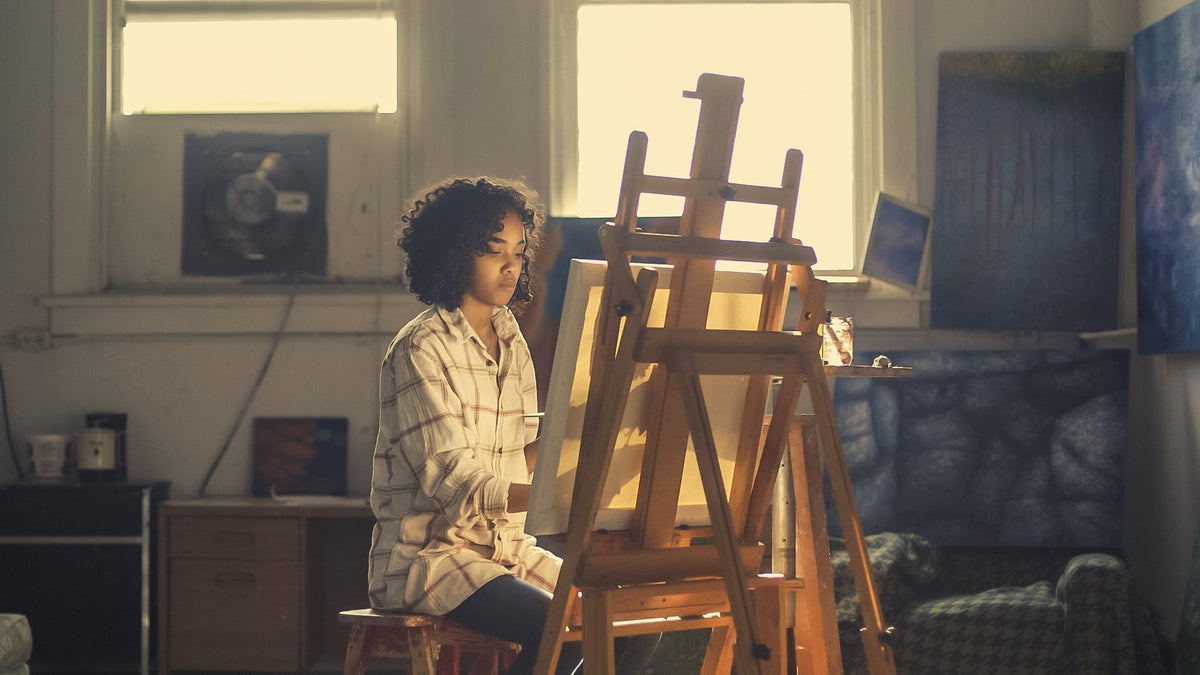

Grief is an intricate journey that affects every person differently. While some express their feelings through words or movement, others find solace in creating art. Art therapy harnesses the healing power of creativity to help people process loss, express emotions that may be difficult to verbalize and reconnect with joy. You don’t need to be an artist to benefit; art therapy is about the process of creation rather than the outcome. In this article, we explore how art therapy supports grief healing, outline various creative mediums, and offer practical ideas to begin your own artistic journey.
Understanding Art Therapy
Art therapy is a form of psychotherapy that uses creative expression as a therapeutic tool. Facilitated by licensed art therapists, it allows individuals to explore emotions, increase self-awareness, and cope with stress through artistic processes. It emerged in the mid‑20th century, integrating principles from psychology and visual arts. While clinical art therapy sessions involve specific therapeutic goals and trained professionals, engaging in creative activities at home can also provide comfort and insight.
There are several ways art therapy supports grief:
-
Non-Verbal Expression: When grief feels overwhelming or words fail, art offers a way to externalize feelings. The colors, shapes, textures and movements reflect your emotional state without requiring explanation.
-
Mind-Body Connection: Creating art engages the senses and the body. This holistic involvement can ground you in the present moment and reduce rumination.
-
Symbolic Meaning: Artistic symbols can carry personal significance. You might depict a door representing a transition or use specific colors to signify emotions. These symbols help interpret and transform your experience.
-
Coping and Relaxation: Engaging in art can reduce stress hormones, slow the heart rate and promote a state of flow—an immersive, enjoyable experience that temporarily eases pain.
-
Legacy and Memory: Art can memorialize your loved one. Making a memory book, collage or painting becomes a tangible tribute to their life, allowing you to revisit positive memories.
Working With a Professional vs. Personal Practice
Working with a certified art therapist can be particularly beneficial if you experience complicated grief, trauma or mental health concerns. A professional creates a safe environment, provides prompts tailored to your needs and interprets themes in your art. They can help you uncover subconscious patterns and guide you through difficult emotions.
However, you can also practice art therapy informally at home. Personal art-making offers flexibility, privacy and freedom. It doesn’t replace clinical therapy but serves as a supportive activity. You can integrate art into daily routines, use it during specific moments of grief or plan a longer project.
Choosing Creative Mediums
Art therapy encompasses various mediums, each with unique qualities. Consider trying multiple forms to discover what resonates:
-
Drawing and Painting: Pencils, pens, markers, watercolors and acrylics are versatile. Drawing allows for quick expression, while painting encourages fluid movement and blending colors. Use large sheets of paper to explore big gestures or small notebooks for portable sketching.
-
Collage and Mixed Media: Combine photographs, magazine clippings, fabric, natural elements and paint. Collages reflect the complexity of grief, layering different textures and images. Mixed media invites experimentation and can incorporate meaningful objects like letters or dried flowers.
-
Sculpture and Clay: Working with clay or modeling dough engages the hands and can be soothing. Sculpting allows you to mold and shape your feelings. You can create vessels, figures or abstract forms.
-
Photography: Taking photos can help you notice details you might otherwise overlook—sunlight through leaves, a cherished object, your loved one’s favorite place. Photography projects like “a photo a day” foster mindfulness.
-
Textiles and Fiber Arts: Knitting, weaving, embroidery and quilting connect you to tactile experiences and traditions. Creating a memory quilt from clothing pieces can be especially meaningful.
-
Digital Art: Using digital drawing tablets, graphic design software or apps opens possibilities for layering images, experimenting with colors and incorporating text. Digital art is accessible and forgiving, allowing you to undo and redo easily.
-
Printmaking: Techniques like stamping, linocut or monoprinting use repetition. The act of carving or rolling ink can be meditative. Repetition mirrors the cyclical nature of grief.
Select a medium that feels accessible and enjoyable. You might also combine them, such as painting on top of collaged paper.
Creating a Safe Space for Art-Making
A safe, comfortable environment encourages creative expression. Consider these steps:
-
Gather Materials: Start with basic supplies—paper, pencils, paint, scissors, glue. You don’t need expensive materials. Recycled cardboard, old magazines and household items work well.
-
Set Up a Dedicated Area: A table, corner of a room or portable art kit creates a sense of ritual. Organize supplies in bins or drawers for easy access. If space is limited, a lap desk or folding table suffices.
-
Establish Mood: Play music, light a candle or diffuse essential oils. Choose scents that remind you of your loved one or calm your mind. Keep water and snacks nearby.
-
Remove Judgments: Before you begin, remind yourself that there is no right or wrong way to create. The purpose is expression, not perfection. If self-critical thoughts arise, gently acknowledge them and keep going.
-
Use Protective Coverings: Wear old clothes or an apron. Cover your work surface with newspapers or a plastic sheet to reduce worries about making a mess.
Art Therapy Activities for Grief
Here are creative prompts and projects tailored to different stages of grief. Feel free to adapt them to your needs and preferences.
1. Emotion Color Wheel
-
Draw a circle and divide it into sections like a pie chart.
-
Assign a different emotion to each section—anger, sadness, gratitude, love, guilt, relief, etc.
-
Choose colors that represent each emotion to you and fill in the sections. For instance, red for anger, blue for sadness or yellow for moments of joy.
-
Observe the proportions. Does one emotion dominate? Does the wheel change over time? You can repeat this activity periodically to track shifts in your feelings.
2. Memory Collage
-
Gather photos, old letters, ticket stubs or photocopies of keepsakes related to your loved one.
-
Cut out images from magazines that evoke feelings or scenes connected to them (e.g., landscapes, symbols, animals).
-
Arrange the pieces on a canvas or sturdy paper. Glue them down, layering objects for texture.
-
Paint, draw or write around the collage. Add words, quotes or phrases that capture your memories.
-
Display your collage in a special place. It serves as a visual collection of moments and emotions.
3. Grief Map
-
On a large sheet of paper, draw yourself in the center. Around you, create a “map” of significant places, people and experiences.
-
Use symbols, shapes and colors to represent different aspects. A heart could symbolize a support person; a boat might represent travel with your loved one; a mountain could signify obstacles.
-
Connect the symbols with lines or paths. This map illustrates your grief landscape—the relationships and experiences that shape your journey.
4. Letter in Art
-
Write a letter to your loved one. Don’t worry about grammar or structure—write freely, expressing what you miss, what you’re grateful for and what you wish you could say.
-
Take a large sheet of paper and write the letter again, letting words overlap and cover the page. As it fills, begin painting or drawing over the text. The written words become texture; the art expresses the emotion behind them.
-
This activity symbolizes letting go of words and letting feelings manifest visually.
5. Self-Portrait of Grief
-
Stand in front of a mirror or imagine your current emotional state. Draw or paint a self-portrait that expresses how grief feels in your body and mind.
-
You might exaggerate colors, distort shapes, or incorporate abstract elements. Use strokes, textures or patterns to depict internal sensations.
-
Afterward, write a few sentences about the artwork. Does it reveal something you hadn’t recognized? You can repeat this project at different times to see how your self-perception shifts.
6. Container of Comfort
-
Sculpt or craft a container, such as a bowl, box or jar, using clay, papier-mâché or cardboard.
-
Decorate the outside with symbols of protection—colors, patterns or images representing strength and love.
-
Place small objects inside that bring comfort—a piece of fabric, dried flowers, a note, or a trinket belonging to your loved one. This container becomes a physical representation of safety and care.
7. Mandala Drawing
-
Draw a circle and create a mandala by filling it with shapes, patterns and colors radiating from the center. Mandalas represent wholeness and balance.
-
Focus on repetitive patterns, which can be meditative. Allow the design to emerge intuitively without planning.
-
As you draw, breathe deeply. Let your mind rest on the patterns. The process can calm anxiety and foster a sense of order amidst chaos.
8. Memory Box or Shadow Box
-
Find a box with a lid or a deep picture frame (shadow box).
-
Paint or cover the outside with decorative paper or fabric.
-
Arrange items inside that represent your loved one—photos, letters, jewelry, dried flowers, small objects. You can also write notes or poems to tuck inside.
-
Place the box where you can see it. Opening it can become a ritual when you want to feel close to your loved one.
9. Healing Through Music and Art
-
Create art while listening to music associated with your loved one or a specific time in your life. The music may evoke memories and emotions. Let the rhythm and lyrics guide your brushstrokes or movements.
-
Alternatively, paint how the music makes you feel—use colors and shapes to interpret the sounds. This synesthetic approach connects auditory and visual senses.
10. Life Timeline
-
Draw a horizontal line across a sheet of paper. Mark key events in your loved one’s life above the line (birth, schools, marriage, achievements) and key moments in your life below the line (relationship with them, memories shared).
-
Illustrate or write about each event. Fill the spaces between with patterns, colors or images representing emotions.
-
This timeline helps you contextualize their life within yours and can be a reflective exercise in honoring their journey.
Using Art to Engage Family and Friends
Art therapy isn’t limited to individual practice. Involving family members and friends can provide shared support:
-
Group Collage: Gather with family members to create a collective collage. Each person brings photos or objects. Arrange them together, discussing memories as you work.
-
Memory Quilt: Invite each participant to decorate a fabric square with drawings, words or fabric pieces. Sew the squares together to make a quilt that honors your loved one.
-
Paint Night: Host a painting evening where everyone creates art inspired by the person who died. Share stories and offer encouragement. Display the paintings as a gallery in your home or at a memorial gathering.
-
Art Exchange: Create small pieces of art and exchange them with friends who are also grieving. This fosters connection and reminds everyone that they’re not alone.
Collaborative art strengthens bonds and provides communal healing. It also honors the deceased by celebrating their impact on multiple lives.
Combining Art Therapy with Other Modalities
Art therapy pairs well with other healing practices. Consider integrating:
-
Journaling: After creating art, write about your experience. What emotions surfaced? What memories emerged? How do you interpret your artwork? Journaling helps integrate insights.
-
Meditation: Start with a short guided meditation to center yourself before creating. Alternatively, end with meditation to process any emotions stirred up by art-making.
-
Movement: Dance, yoga or gentle stretching after art can release tension. You might dance freely while looking at your artwork, allowing your body to respond to shapes and colors.
-
Nature: Take your art materials outdoors. Creating in nature connects you to the cycles of life and can be especially calming. Natural materials like leaves, twigs and stones can be incorporated into your art.
-
Therapy: Share your art with a grief counselor or support group. Discussing your artwork can deepen understanding and foster support.
Combining modalities addresses different aspects of grief—cognitive, emotional, physical and spiritual.
Acknowledging and Releasing Criticism
Many people believe they’re “not creative” or fear that their art will be judged. Remember:
-
Art Therapy Is Personal: Your creations aren’t for anyone else’s approval. They’re reflections of your inner world.
-
Allow Imperfection: Messy, raw artwork may convey feelings more authentically than polished pieces. Let go of expectations.
-
Enjoy the Process: Focus on the act of making art, not the final product. Notice the sensation of paint on paper, clay in your hands, or fabric under your fingers.
-
Observe Self-Talk: If critical thoughts arise (“This looks terrible,” “I’m wasting my time”), acknowledge them and refocus on the pleasure of creation.
Approaching art with curiosity and compassion unlocks its healing potential.
Conclusion
Art therapy offers a gentle, non-verbal way to explore and soothe grief. Through drawing, painting, sculpting, collaging or crafting, you can express feelings that words cannot capture. By creating a safe space, choosing mediums that resonate with you, and engaging in guided projects like collages, mandalas or memory boxes, you transform your emotions into tangible forms. Art-making becomes a ritual of remembrance, a channel for love and a testament to resilience.
Whether you work with a professional art therapist or explore art on your own, let go of judgments and embrace the process. Creativity is innate; it doesn’t require skill, only willingness. Through art, you honor your loved one’s memory, nurture your own healing and rediscover moments of beauty and joy even in the midst of grief.
Our Best Selling Collection
Frequently Asked Questions
What are the shipping options for my memorial?
Oaktree offers free nationwide shipping on all urns and cremation jewelry items, with delivery typically taking 2-5 business days, including processing time. Need it sooner? Expedited shipping (overnight or 2-day) is available at checkout for an additional cost, and we will also prioritize processing for faster delivery. If you need international shipping, please contact us first to confirm availability and rates.
How long will it take for my engraved item to arrive?
Engraved urns and cremation necklaces require an additional 1-3 business days for personalization before shipping. If you need faster delivery, please contact us—we’ll do our best to expedite processing and accommodate your timeline. Expedited shipping options are also available at checkout to ensure your memorial arrives as soon as possible.
What do I do if I never received my order?
If your order hasn’t arrived within 10 business days, please contact us so we can track your shipment and resolve any issues. We’ll ensure your memorial reaches you as soon as possible.
What do I do if I received a defective order?
If your order arrives damaged or defective, contact us right away. We take pride in our high-quality craftsmanship and will work quickly to replace or repair your item at no additional cost.
Can I return my urn or cremation necklace? What is your return policy?
Oaktree offers a 100-day return and exchange policy for non-engraved items. Due to personalization, engraved urns are final sale and cannot be returned. For full details on how to start a return or exchange, visit our Returns & Exchanges page.
How do I make changes to an urn I’ve already ordered?
If you need to modify an order, contact us as soon as possible. If your urn is already engraved, we may not be able to make changes, but we’ll do our best to accommodate your request before processing.
How are your urns made? Where do the materials come from?
Oaktree’s urns are handcrafted in the USA and Europe using sustainable, locally sourced materials. Our artisans ensure each piece is beautifully designed and built to honor your loved one’s memory with care.
How do I choose the right urn size?
Each product page includes detailed dimensions, weight capacity, and cubic inches to help you select the right urn. As a general guide, 1 cubic inch holds 1 pound of pre-cremation weight. If you need help choosing, feel free to contact us.
Some urns are marked as “sold out.” When will they be available?
Our handmade urns may take a few weeks to restock. If you’re interested in a specific style, contact us for an estimated restock date, and we’ll notify you when it’s available.
Does Oaktree place the ashes into my urn?
Yes, we offer an optional ash transfer service for an additional fee. If you’d like us to handle this process, please contact us when placing your order. You’ll need to mail the ashes to us, and we’ll carefully transfer them into your selected urn.
How do I transfer ashes into my urn?
Cremated remains typically arrive in a sealed plastic bag inside a plastic container. To transfer them, simply place the sealed bag inside your urn. If needed, use a funnel for precise placement. If you have any concerns, our team is happy to assist.
How do I order an engraved urn?
To personalize your urn, select “Yes” under “Would you like your item engraved?” on the product page. If you’d like a custom design beyond standard engraving, contact us and we’ll explore options to create a unique tribute.
Can my urn be shipped directly to a funeral home?
Yes! During checkout, you can enter the funeral home’s address for direct shipping.
Can I customize my urn beyond engraving?
Yes! In addition to engraving, we offer custom design services, including unique finishes, symbols, or artwork. If you’d like to personalize your urn beyond standard options, contact us to discuss customization possibilities.
What materials are Oaktree urns made from?
Our urns are crafted from premium materials such as wood, ceramic, marble, metal, and biodegradable materials. We focus on sustainable sourcing and high-quality craftsmanship to create lasting memorials.
Do you offer keepsake urns or mini urns?
Yes, we offer keepsake urns and mini urns, which are smaller versions designed for sharing ashes among family members or keeping a small portion as a personal tribute.
Can I pre-order an urn for future use?
Absolutely! Many customers choose to pre-order an urn in advance. This ensures availability and allows for customization without time constraints. Contact us to arrange a pre-order.
Do you offer pet urns?
Yes, we provide a range of pet memorial urns designed to honor beloved pets. These are available in different materials and sizes to suit dogs, cats, and other pets.
How do I clean and maintain my urn?
Urns require gentle care to maintain their beauty. Use a soft cloth and mild cleaner for metal or ceramic urns. Avoid direct sunlight and moisture to preserve wood urns. Contact us for specific care instructions based on your urn’s material.
Can I travel with an urn? Are they TSA-approved?
Most Oaktree urns are TSA-compliant, making them safe for air travel. Choose a non-metal urn to ensure easy screening. We recommend carrying the urn in your carry-on bag and bringing the cremation certificate from the funeral home.
How do I track my order?
Once your order ships, we’ll send you a tracking number via email. You can use this to monitor the shipment status. If you don’t receive tracking details, contact us for assistance.
How do I contact Oaktree if my question isn’t answered here?
We’re happy to assist! Visit our Contact Us page to reach us via email, chat, or phone. Our compassionate team is ready to help.

